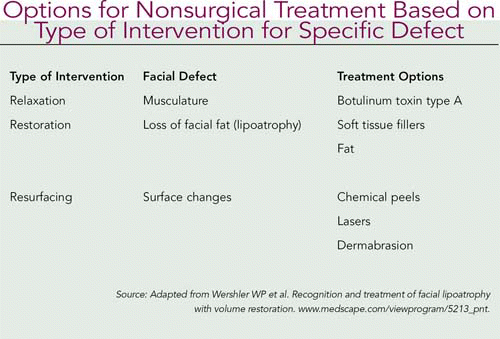I’d be aware of overblown expectations, he said, adding that these technologies are manufacturer driven and so far have not been shown to be better than anything else.
Explore This Issue
August 2006
Another newer technology that is hoped to be less invasive, cause less damage to the superficial skin, and permit a more rapid recovery period is the newest type of laser, the fraxel laser. However, more experience is needed with this new technology before its effectiveness can be determined, said Dr. Toriumi who will not commit to this technology until more is known. The general problem with some of these technologies, he added, is that they tend to become obsolete in a relatively short period of time.
Dr. Papel agrees. Although he personally has no experience with thermage, he said that there are many practices in town that bought this machine and I don’t think that anyone is using them anymore.
Incorporating Skin Resurfacing Procedures into Otolaryngologists’ Practice
Dr. Fedok and Dr. Toriumi, who are practicing otolaryngologists, already have incorporated some of the previously described techniques into their practice. My practice, although a University-based practice, is highly involved with facial plastic and reconstructive procedures, said Dr. Fedok, so for the application of most of these technologies is a daily event. He added, however, that he has very limited experience with plasma energy and no experience with thermage.
Dr. Toriumi who is using dermabrasion for scars and carbon dioxide lasers for treating fine wrinkles in fair-skinned people is not going to use some of the newer technology, like the fraxel laser, before more data is available on its effectiveness.
Dr. Gentile uses an approach called multimodality aesthetic skin rejuvenation that takes into consideration both the number of different treatment modalities available and recovery time intolerance. In this approach, more than one modality may be used to treat a given problem.
Although some otolaryngologists are clearly incorporating these techniques into their practice in different degrees, not all otolaryngologists are doing so. Among the issues that otolaryngologists’ need to address when incorporating skin resurfacing procedures in their practice is the technology that is available to them. What equipment do they have? What equipment do they want to invest in? Can the current equipment they have be adapted for any of the skin resurfacing procedures?
According to Dr. Toriumi, there are very few if any existing technologies that exist in the otolaryngologist’s office that can be converted to treat cosmetic issues with their patients. Conversely, Dr. Fedok said that all of these tools or technologies most probably have both non-cosmetic and cosmetic applications.
Leave a Reply